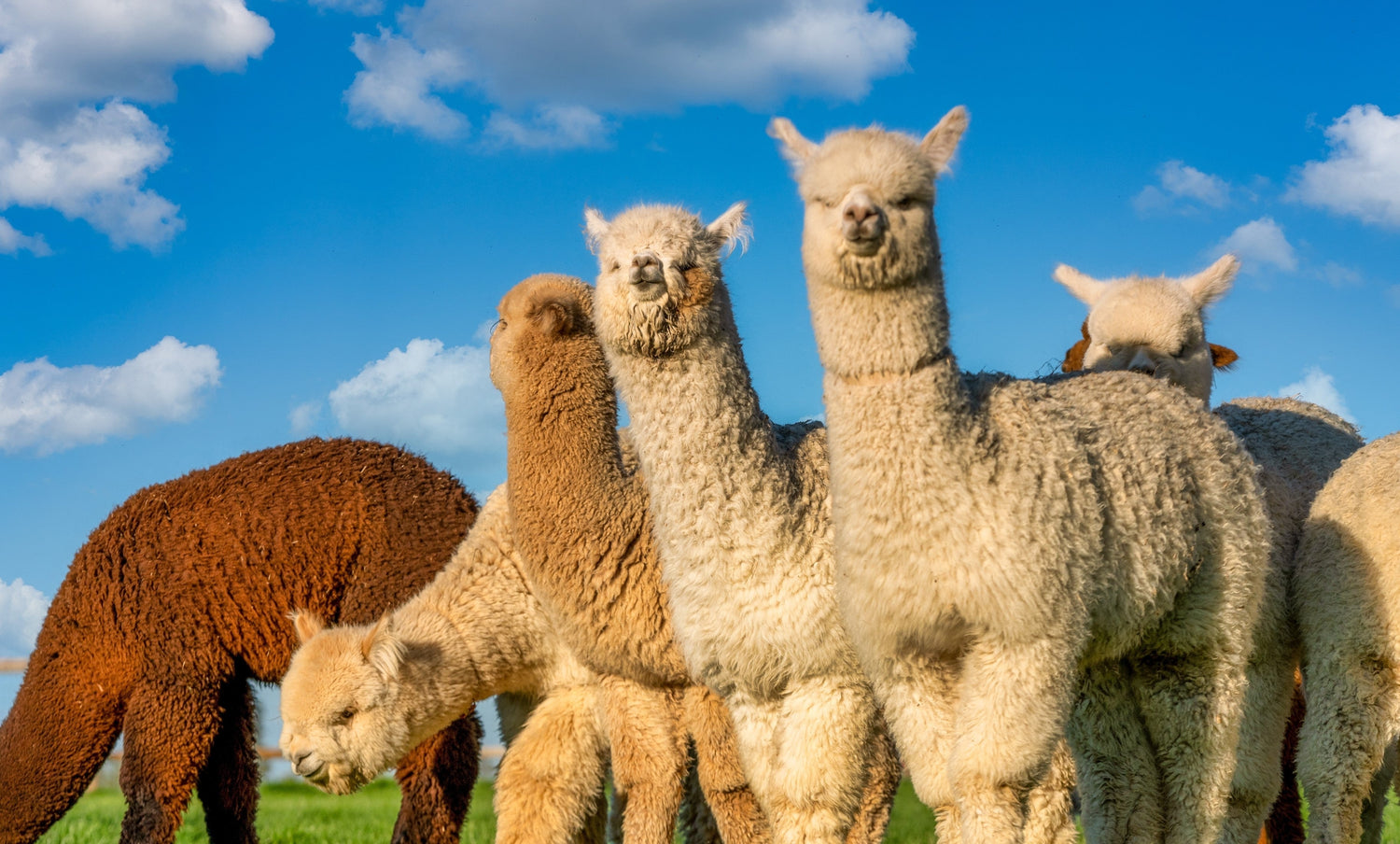Fibre Focus Friday: Superfine (and finer) fibres

It's easy to feel how soft a fibre is when you touch it, and most of us fibre-inclined folk will be able to tell the difference between fine, medium and coarse fibres quite easily. But what about the really fine fibres? We're glad you asked!
We've already touched on different types of fineness in our Merino Sheep & their Welfare article but we didn't look at fibres from other animals and what really helps to differentiates between them all.
It all begins with a micron, that tiny 1000th of a millimetre measurement which is used as a thickness measurement. The smaller the number, the thinner and finer the fibre. And the finer the fibre, the more densley they grow. This is very important to any animal that wants to keep itself warm as these fibres help to trap air in pockets close to them and act as insulation. Examples of this can be seen in dual or double coated animals; the finer fibre is underneath keeping them warm while the coarser outer fibres help to deflect the weather and keep them from getting soaked through.
The thickest of the fine fibres (it's all relative!) that we'll touch on is the Superfine Merino at 18.5mic. This is a very versatile fibre used for many different crafts which is softer than its 23mic counterparts. It felts readily, spins like a dream and produces some of the most snuggly yarns around (especially with a light twist); equally it'll produce a cobweb weight yarn without any issues. The finest Merino fibre is classes as Ultrafine, and ours is 14.5mic. This is the sort of fibre that you'd use for a special project; definitely for next to skin use and not for something that will get hard wear like socks (unless you're treating yourself, of course!)
Between these two Merino standards you'll find a whole host of other fibres that are just crying out to be squished. Camel is a great example of a double coated fibre; the outer fibres are removed during the cobing process leaving just the soft inner or under coat. Baby camel can be as fine as 16mic as much like many animals, the first clip is the finest. Camel is a very warm fibre but isn't often used on its own due to the cost, so you'll find it blended with other fine fibres to add not only a beautiful natural tone but also extra softness and bulk.
Keeping with the camelid theme, alpaca is always popular when it comes to softness. As with the camel, baby alpaca (or Cria) have the finest fleeces. Our Royal Baby Alpaca is 18 - 20mic but we've come across fleeces which are are low as 16mic. Alpaca quality varies depending on the type (Suri or Huacaya), age (adult or cria) and also the part of the fleece. With sheep, the best part of the fleece is called the diamond which is across the centre of the shoulders and back in a diamond shape; with an alpaca a single fleece is split into three qualities; firsts, seconds and thirds. Firsts are the best bit and will be the blanket across the back, this tends to be the lowest micron. Seconds are the bits around this which may be a little shorter or a little more coarse, generally they're not as good as the main body of the fleece so they are removed. Finally the thirds are the neck and leg hair, these tend to be more coarse and grubby and aren't often used in the production finer fibres as they can detract from the quality and handle.
And that brings us nicely back to how a fibre feels. Quite often people will say 'I can't wear wool, it's too itchy' and while that is true, it isn't true for all wools. Remember; all wool has a purpose and the wool you use for a rug isn't the same as the one you'd use for a baby!
When you test wool to find out it's micron count, you get quite a lot of infomation about the sample you sent. The report will tell you how many fibres were in the sample and how many were which micron count. From this you get the mean micron (which you then can used to classify the fineness) and the comfort factor. There's a fair bit of maths involved in this bit but in a nutshell, the comfort factor is calculated by working out the percentage of fibres above (or below) the mean micron. The comfort factor of most superfine fibres is 99%+ which is why superfine fibre is used for base layers - because there is no itch (unless you're seriously sensitive or allergic to wool!). In some cases when the fibre is ultrafine you can find a 100% comfort factor which is pretty impressive.
So now you know a bit more about finer fibres, the challenge is to spot them out in the wild!







